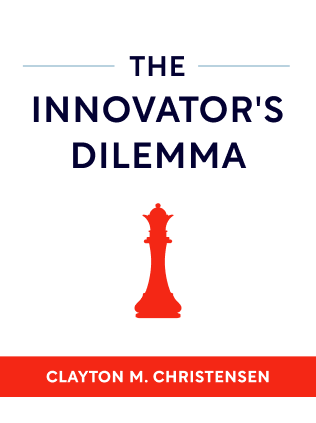

This article is an excerpt from the Shortform summary of "The Innovator's Dilemma" by Clayton M. Christensen. Shortform has the world's best summaries of books you should be reading.
Like this article? Sign up for a free trial here .
What is the Apple PDA? What can you learn from the Apple PDA about disruptive innovation?
The Apple PDA, also known as the Apple Newton, is a case study in failed disruptive innovation. Truly new products don’t have an established market so you can’t start too big.
Read more about the Apple PDA as a case study in scaling disruptive innovations.
Forcing Market Growth With the Apple PDA
Projects that are perceived to be successful garner more organizational and financial support, which helps them to progress to higher levels of success and profitability. By contrast, projects that are perceived as failures simply languish. To give a disruptive project the best chance of long-term success, a company must assign it to a team and organization small enough to appreciate small victories.
When Apple developed a disruptive personal digital assistant (PDA), instead of taking this approach and assigning the project to a small team, the company tried to make the market bigger. By the time Apple decided to make an Apple PDA, called the Apple Newton, the firm was a $5 billion public company that faced pressure to continue growing. Apple was determined to make the Apple Newton a success.
Apple’s CEO made a huge effort to promote the Apple PDA and keep resources focused on its development. The company also invested heavily in market research to find out what features customers would want.
However, Apple PDAs were a disruptive technology. Since disruptive technologies offer novel functions, their users don’t know what they want or how they’ll use the products—until they start using them. Disruptive innovations require trial and error before they appeal to a larger customer base, and that takes time. Apple couldn’t effectively shortcut this process with market surveys.
Apple’s impatience cost the company a lot of money on multiple ineffective efforts:
- Extensive market research to try to determine what customers wanted
- Development of complicated technology based on the market research, not on actual usage
- Aggressive marketing to push people to buy the product
The Newton sold 140,000 units in its first two years, which was considered a failure for such a large company. (Shortform note: The Newton had some traction in the medical field, but it lost most of the PDA market when the Palm Pilot was introduced. Steve Jobs had the Newton discontinued in 1998, five years after its release.)
However, failure and success are relative: Fifteen years earlier, Apple sold just 43,000 units of a then-disruptive technology and considered it such a big success for the fledgling company that it went public. The perceived success and failure of the two product launches were relative to the size of the company at the time, when they should’ve been viewed relative to the size of the small, emerging markets.
The Newton may have reached more success if the company had been willing to go through the necessary trial-and-error process to fine-tune the product and find the right market, but leaders couldn’t get past the perception of failure. It’s extremely difficult for company leaders to view a product’s success in the context of the market instead of the context of the company—which is why Apple should have created a smaller, independent organization to develop and launch the Newton.

———End of Preview———
Like what you just read? Read the rest of the world's best summary of Clayton M. Christensen's "The Innovator's Dilemma" at Shortform .
Here's what you'll find in our full The Innovator's Dilemma summary :
- Christensen's famous theory of disruptive innovation
- Why incumbent companies often ignore the disruptive threat, then move too slowly once the threat becomes obvious
- How you can disrupt entire industries yourself






